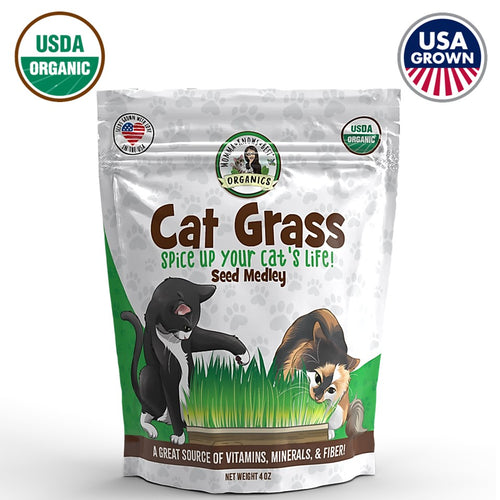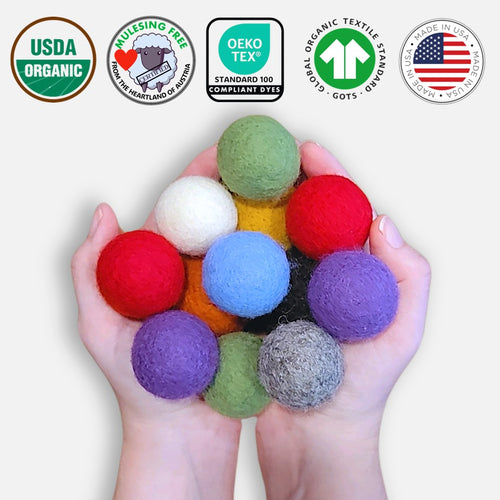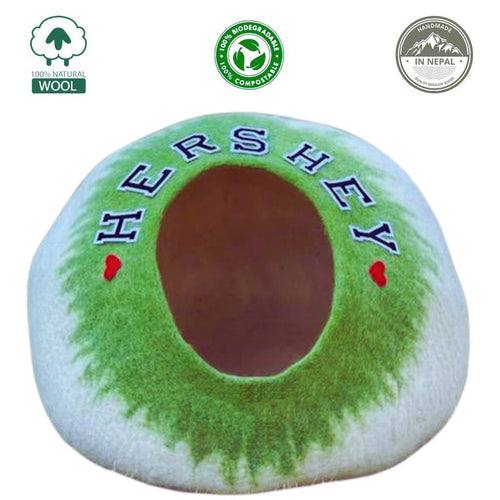Your Cart is Empty
Free 2-5 day delivery | No minimum purchase required
Free 2-5 day delivery | No minimum purchase required
Shop
Learn
Strategies to Remove the Smell of Cat Urine Permanently
 by K Marie Alto Updated
10 min read
by K Marie Alto Updated
10 min read

We love our feline friends, but there's no denying that they come with certain risks. One of those risks is the softly-named "litter issues" or, to put it more bluntly, cats peeing on things.
Whether they're missing the litter box and staining the floor, panicking on the way to the vet and letting loose in the car, or finding an odd corner of a closet to go to when they're sick, it can be a rude surprise to discover the stench.
Unfortunately, cat pee has a few unique qualities to it. For one thing, it's very strong. Cats have a unique kind of urinary tract; they evolved to make use of as much water as they can and waste as little as possible, so the waste products in their pee are very concentrated. It's also heavy on the ammonia, which is a strong and foul odor on its own.
There's also the fact that if your cat is peeing where they shouldn't, there's a chance they're having issues, like an infection, a kidney problem, or a bladder problem, and all of these add additional layers of foulness to the horrid soup.
Cats also use urine as a scent marker, which means it's adapted to soaking into things and lingering as a form of territorial marking. Unfortunately, "soaking into things and lingering" is the exact opposite of what you want when it ends up in your laundry, on your carpet, or in the car.
So, if your cat has let loose somewhere you really wish they hadn't, and you want to get rid of the lingering scent, what can you do? The good news is you have a few options.
Table of Contents
Option 1: Baking Soda, Vinegar, and/or Hydrogen Peroxide
The first option is the one you'll likely turn to the first time this happens. Why? Because it's a set of household chemicals you probably have on hand already.
Baking soda is common for baking, obviously, and also as a deodorant for cupboards or the fridge. Vinegar is a strong acid and can help cut through other chemicals to clean them up. And, of course, hydrogen peroxide is often used as a cleaner or disinfectant.
Generally speaking, your first step when you discover untimely cat pee is to blot up as much as possible, ideally without scrubbing it into whatever it's on.
Blotting and dabbing it up with paper towels or old clothes that you're willing to throw away if necessary, until it's no longer wet, is the first step. The more you get up and away mechanically, the less you have to deal with chemically.
Applying vinegar to the surface can help denature some of the components of the cat pee and can kill bacteria that might linger and cause a problem. You can use plain vinegar or apple cider vinegar, usually via a spray bottle to the area. You can dilute the vinegar 1:1 with water or leave it as-is; it's up to you.
Once the vinegar has been applied and dabbed back up, you can try hydrogen peroxide. Hydrogen peroxide is best for things like hardwood floors but can work on carpets, upholstery, and clothing in some cases.
Hydrogen peroxide oxidizes the lingering urine and helps get rid of some of the scents. Ideally, you want to pour it onto the affected area and let it sit for at least five minutes to let it work its magic. Then, dab it back up.
Warning: Hydrogen peroxide can also break down other things on the surface, including stains, but also including dyes; if you're considering using it on clothing, carpet, or anything you don't want discolored, make sure to test a small, out-of-the-way area first.

After all of that, baking soda is your next tool. Sprinkle it liberally all over the area and let it soak up odors for at minimum half an hour, if not longer. Vacuum it up and, if necessary, apply more, and repeat.
Another warning here: do NOT use a chemical cleaner with either bleach or ammonia in it. Bleach can react with the cat pee to create a toxic gas that can be harmful to you and your cat. Ammonia cleaners, meanwhile, just add to the smell and won't get rid of it.
This isn't going to be your best option. Why not? Well, none of these chemicals actually address the urine itself, just the scent. There are two major issues with this. The first is that there's a pretty good chance that the smell will linger even after all of this, especially if it's on carpet or furniture and has soaked into places you can't directly access, like interior foam or subflooring.
A big roadblock is that uric acid, one of the key components of urine, is not water-soluble. Hydrogen peroxide and vinegar are both water-type cleaners rather than cleaners that can address those chemicals directly. It's like trying to wash grease off your hands without soap; it just doesn't work.
The second is that even a hint of the scent remaining is enough for your cat to recognize, and once a cat has urinated somewhere, there's a pretty good chance they'll come back and hit the same spot again. You may need to work on more litter training or redirect them whenever possible to make sure it doesn't happen again.
So, if this isn't the best option, why is it option #1? Simple: unless you're well-prepared, this is what you'll have on hand, and time is of the essence when it comes to cleaning up cat pee. The longer it sits, the more it soaks in, and the harder it is to clean up later. It's better to do what you can now than to let it linger while you rush out to the store.
Option 2: Enzymatic Cleaner
By far, the best option to clean up a cat's mistake is to use an enzymatic cleaner.
Enzymatic cleaners are special sprays that include enzymes and bacteria. Nearly everything in life will decompose eventually, usually because of bacteria, and that includes the components in cat pee that stink. Enzymatic cleaners are made of targeted components that accelerate this process, breaking apart and degrading the ammonia, enzymes, proteins, and other ingredients in cat pee.
This means they're faster, more thorough, and better at their job than household chemicals, even strong ones like bleach. They also are a more complete breakdown, so even those little bits of lingering scent that your cat can smell but you can't will be gone. This helps prevent repeat performances.

There are, unfortunately, a few drawbacks to using enzymatic cleaners.
-
They aren't fast. They're faster than a lot of other options, but you do need to spray them on and let them sit, usually at least overnight. Moreover, you often need more than one treatment to fully address a urine stain.
-
They aren't usable on every surface. Some surfaces will have trouble, such as upholstery, if the urine is soaked in too deep. Others, like leather, can be degraded by the cleaner. Things like hardwood can be additionally discolored, similar to bleach or hydrogen peroxide treatments.
-
They aren't disinfectants. While this won't likely be a problem (and you should probably clean up the area with a disinfectant anyway), if your cat is sick and you have other cats in the house, an enzymatic cleaner alone isn't going to prevent the spread of that illness.
-
They can be intense themselves. Chances are, you'll want to vacate and ventilate the area. Moreover, if the space is too closed up or the cleaner is too intense, it can even cause an allergic reaction in some cats, which will be unpleasant for everyone involved.
Despite all of this, the enzymatic cleaner is generally your best option, and if you have a cat, you should probably proactively buy some to have it on hand.
So, which one? There are dozens of enzymatic cleaners on the market. Some of them are specifically focused on one type of pet and waste and won't work very well on other kinds of waste. A cat pee enzymatic cleaner won't work for dog pee or a diarrhea accident from either species, for example.
People with a lot more resources than I have routinely do testing for these kinds of products and compile lists of the best products to buy. You can make your own judgment from there. I don't have a specific recommendation, nor do I sell a cleaner myself.
Option 3: Professional Cleaning
If you can't seem to get the smell out, it's possible that you'll need to call in the big guns, and that means hiring someone with more professional tools who can do a deep clean and get it right.

Yes, it's costly and time-consuming, but if nothing you do works, it might be the best option. Just make sure that whoever you talk to knows you're addressing cat pee and not just general carpet stains; a regular steam cleaner with a detergent is unlikely to do the job and can even intensify the smell.
Cat Pee Cleaning FAQ
What else is there to know? Other than using a cleaner as directed, there are a few tips you might want to be aware of.
How can you spot additional urine stains?
One of the biggest stumbling blocks is that the obvious cat pee stain isn't always the only cat pee stain. Whether there was some splashing, a second incident, or just a wider area affected than you realized, if you don't clean the whole area, you might miss some, and the smell lingers.

One thing you can do is use a UV light. UV flashlights are easily found online, and cat pee will fluoresce under the light so you can see it. You might also see other things you wish you didn't, but that's the risk you take.
What if the smell lingers after cleaning?
There are three possible causes here.
The first is that you didn't get it all, and you need to repeat the process until it's fully gone. Sometimes, it can take two or three applications of an enzymatic cleaner (and even more vinegar and baking soda) to get it fully clean.
The second is that you got a faulty cleaner (or the cleaner expired), and it just wasn't effective. More than anything, enzymatic cleaners expire and actually do go bad over time, which means if you got a bottle years ago, it might just not be capable of doing the job anymore.

The third and worst is that the urine is soaked into something you can't easily access. I've seen it get between floorboards, into subfloors, beneath baseboards, into the inner workings of recliners, in the upholstery of a car, and a lot more. Sometimes, it can be really tenacious.
Unfortunately, you really only have a couple of options. You can repeat the cleaning, you can disassemble whatever was affected and deep clean it, or you can replace whatever has ended up permanently stained.
What if the cat pee smell is coming from the litter box?
Well, clean the litter box!
Litter is good at absorbing odors, to a point, but if it gets saturated or is old enough, it won't work. That's why you need to keep the litter box cleaned and the litter refreshed. Some kinds of litter are also better than others at trapping odors. Unfortunately, the best deodorizing litters are also the ones with the most environmental issues, so it's a balancing act you have to consider.

Don't forget that the box itself needs to be cleaned regularly as well. Depending on the kind of box you use, the box itself can also be scratched up and potentially hold onto bacteria and odors as well, so you may even need to replace it.
Additionally, it's possible that your cat missed at some point or that splashing has accumulated on a wall or the floor around, which can cause a build-up of the smell over time. Try that UV light, and be prepared for a deep clean.
If you have any questions about anything I discussed in this article, be sure to let me know in the comments section! I'm always more than happy to help however I can!
Because They’re Family, Not Just Pets
Every cat parent knows the feeling—that moment your kitty curls up beside you, trusting, warm, and safe. At toe beans, we believe that kind of love should be returned in every product you choose for them.
That’s why we don’t cut corners. Every single product we make is crafted with your cat’s safety and happiness in mind. Our cat beds are made with OEKO-TEX® certified fabrics and GOTS® organic, cruelty-free wool, giving your cat a toxin-free place to rest and recharge. For grooming rituals that are as gentle as your care, our cat grooming supplies use only the cleanest raw materials free from synthetic fragrances and harmful preservatives.
But safety isn’t our only promise—it’s how we make our products that sets us apart. Unlike big retailers, we’re not resellers. We design and manufacture 98% of what we sell in-house or with trusted U.S.-based artisans. That means complete control over every step, every material, and every choice. For example, unlike most commercially available catnip and cat grass products, our USDA organic cat grass and USDA organic catnip are grown using clean, certified practices and never sourced from overseas growers.
Curious about what’s inside each product we make here? We proudly share our product anatomy datasheets so you know exactly what your cat is snuggling, licking, or playing with.
At toe beans, our mission is simple: improve the life of every fur family member through honesty, sustainability, and love. We’re not on Amazon, and we never will be—because your cat deserves better than overseas mass-produced stuff.
Explore our full line of ethically made Cat Supplies.
K Marie Alto
K. Marie is an animal lover, wife, kitty mom, dog auntie, writer, and co-founder of Toe Beans, a proud American family-owned online boutique pet supplies store focused on the improvement of the life of furry family members via pet parent education, better products, and advocacy. She has over 20 years of experience as a pet momma. She loves sharing her personal journey and experience as a pet parent via her blog and Facebook page where she currently has more than 50K followers (@furrytoebeans) and counting :-). Read more
Leave a comment
Comments will be approved before showing up.
Also in Pet Parents Blog by Toe Beans

The Ultimate Guide to Keeping Your Cat’s Paws Healthy
by K Marie Alto June 05, 2025 9 min read
Discover how to keep your cat’s paws healthy with practical tips on care, signs to watch for, and steps to ensure comfort and wellness for your furry friend.

What You Should Know Before Adopting a French Bulldog
by K Marie Alto May 29, 2025 10 min read
Learn what to expect when adopting a French Bulldog, including their care needs, health issues, and tips to prepare for a happy life with your new companion.

Top 9 Large Dog Breeds That Keep Shedding to a Minimum
by K Marie Alto May 15, 2025 9 min read
Learn about nine large dog breeds that keep shedding to a minimum, helping you manage fur effectively while enjoying the companionship of a big, lovable dog.
Related Products

Cat Grass | USDA Organic | Grown in the USA
$12.99

Cat Ball Toys | Handmade in the USA with 100% Austrian Wool
$20.99

Cat Beds | Customizable Cat Caves
$29.99
Recent Articles
- The Ultimate Guide to Keeping Your Cat’s Paws Healthy June 05, 2025
- What You Should Know Before Adopting a French Bulldog May 29, 2025
- Strategies to Remove the Smell of Cat Urine Permanently May 22, 2025
- Top 9 Large Dog Breeds That Keep Shedding to a Minimum May 15, 2025
- Why Do Cats Hide? The Top 4 Causes Explained May 08, 2025
- What You Should Know Before Adopting a Pit Bull Lab Mix May 01, 2025
- What To Expect When Introducing a Kitten to An Older Cat April 24, 2025
- The Guide to Dog Enrichment Toys for a Happier Pup April 17, 2025
- Techniques To Stop Your Cat from Begging While Eating April 10, 2025
- The Truth Behind Zeus, The World’s Largest Great Dane April 03, 2025
